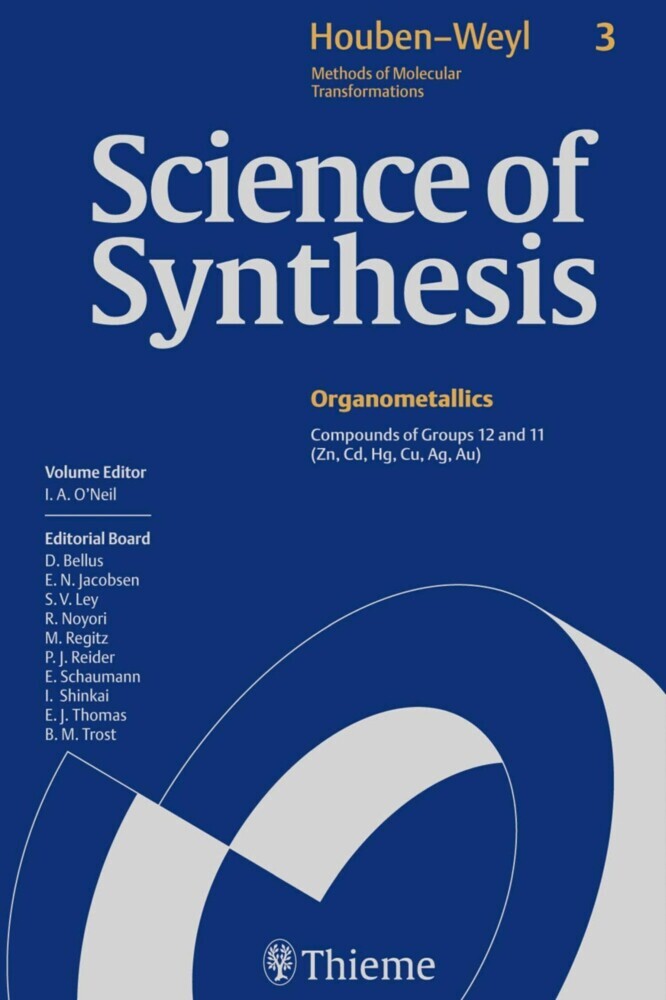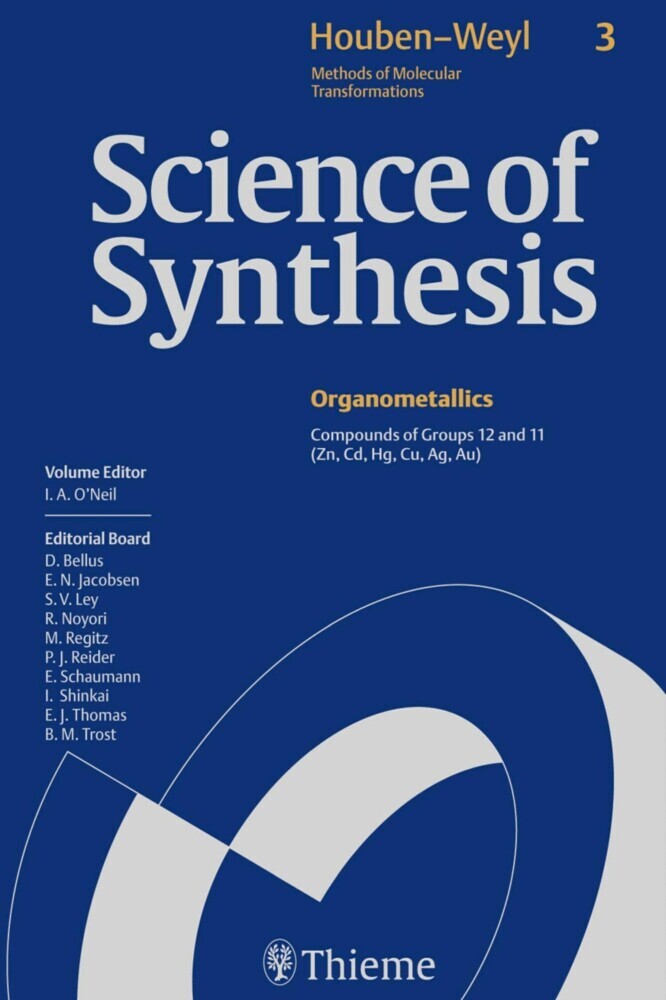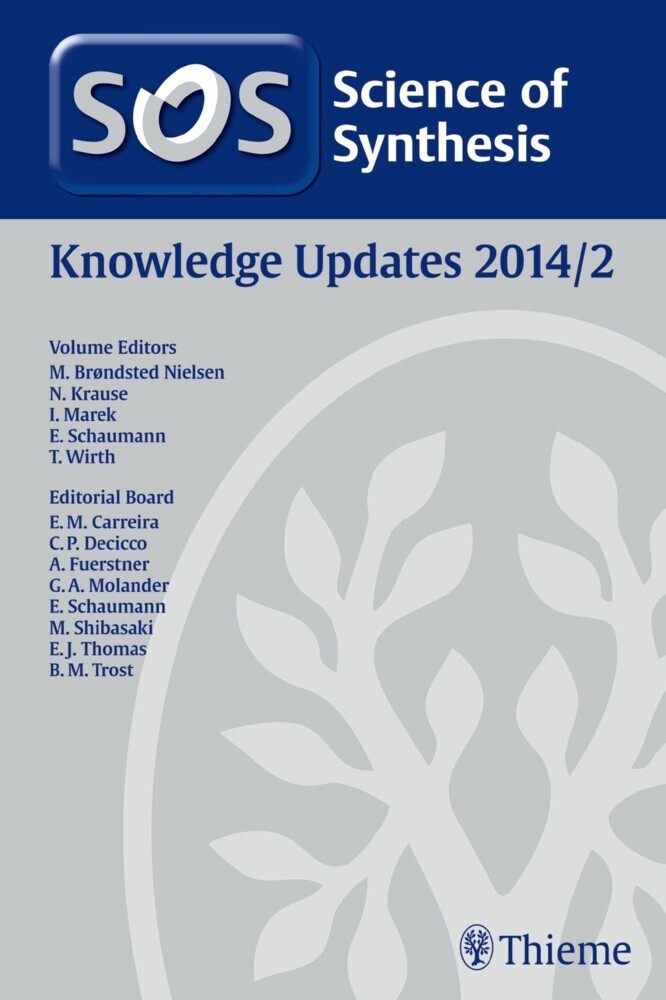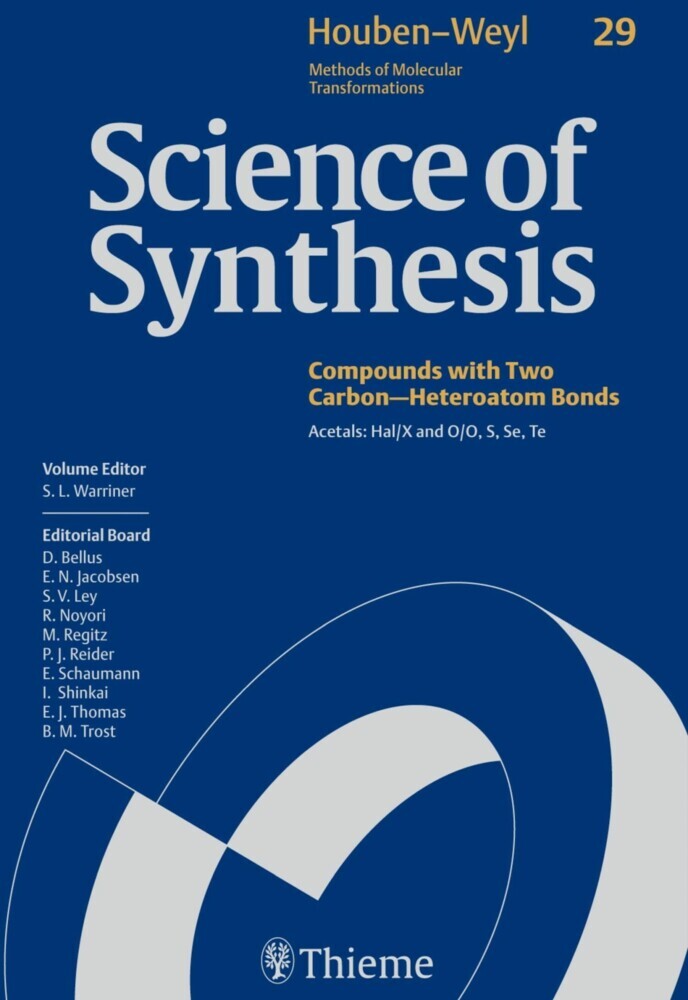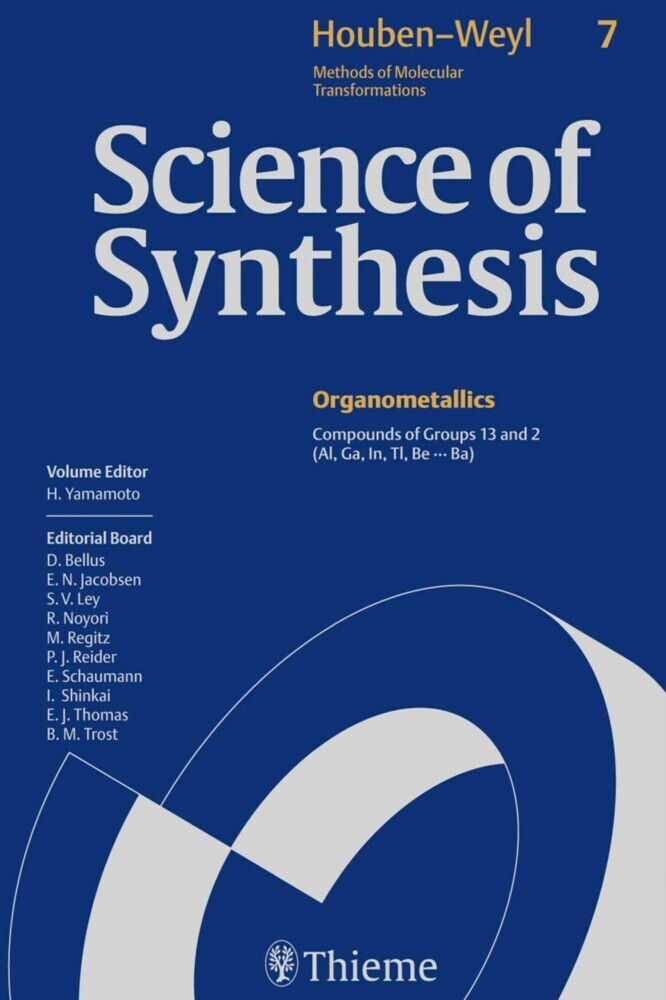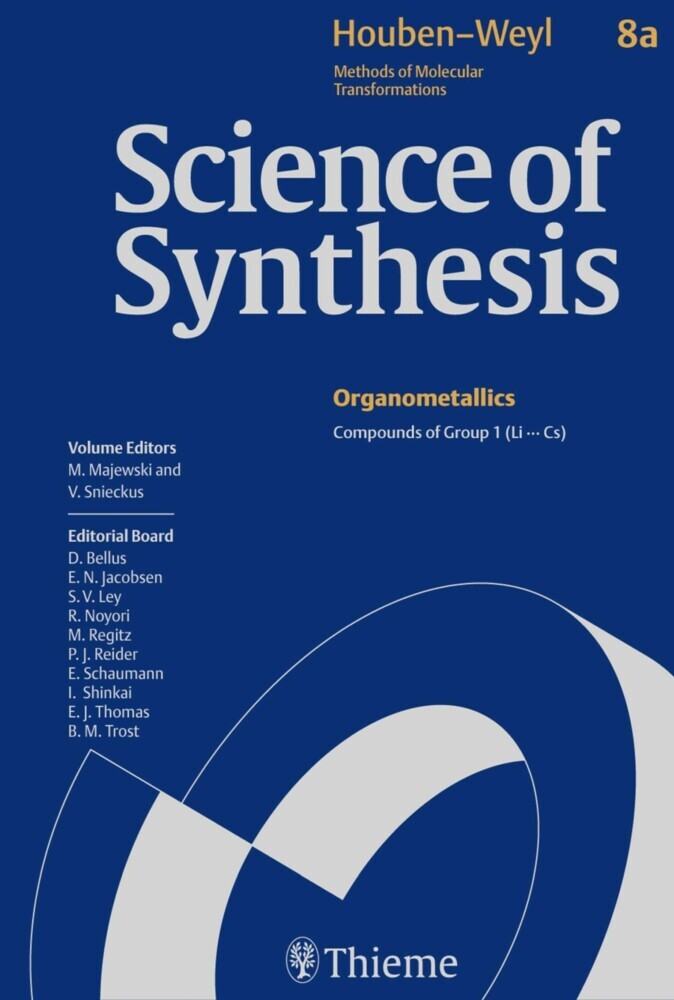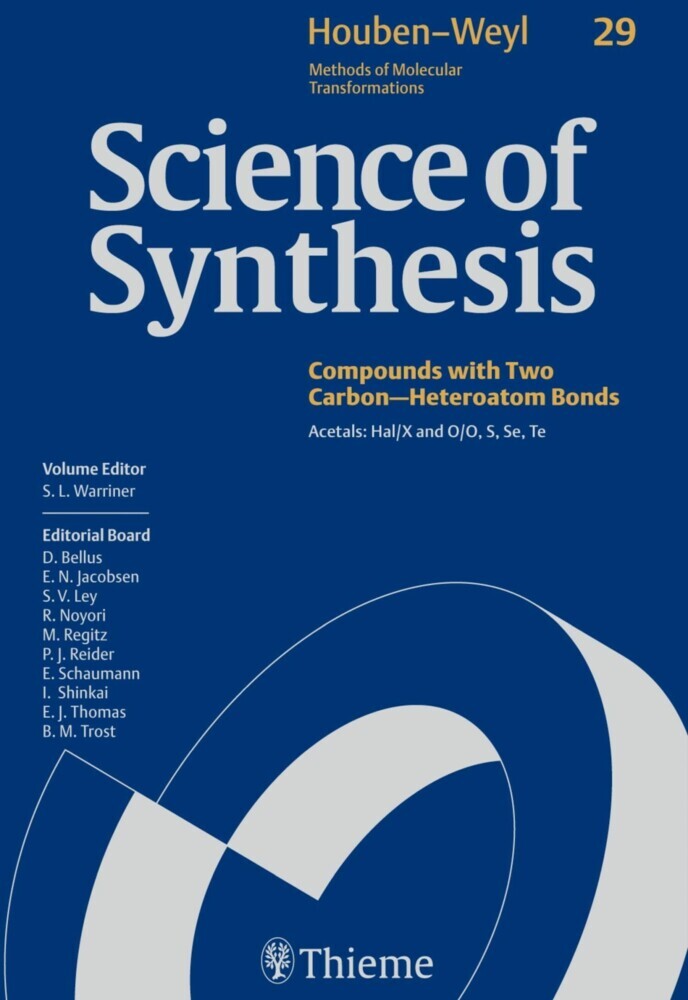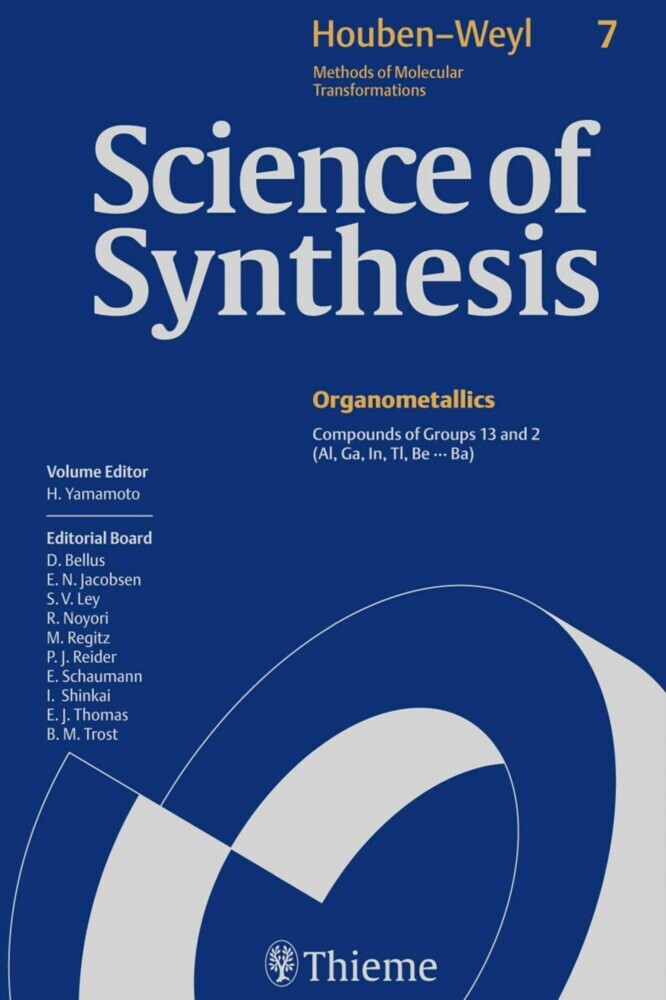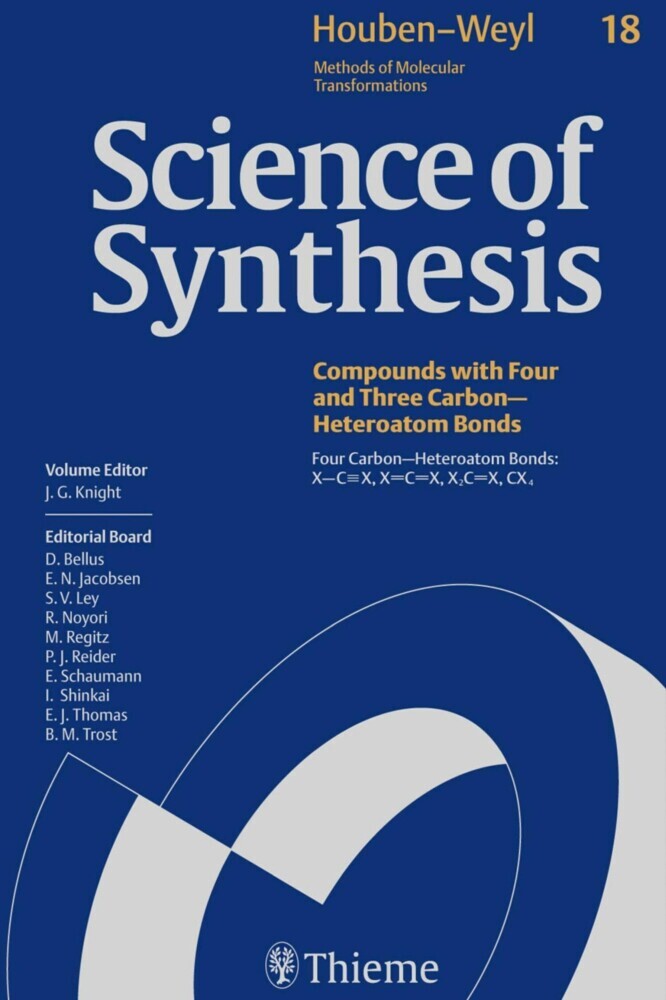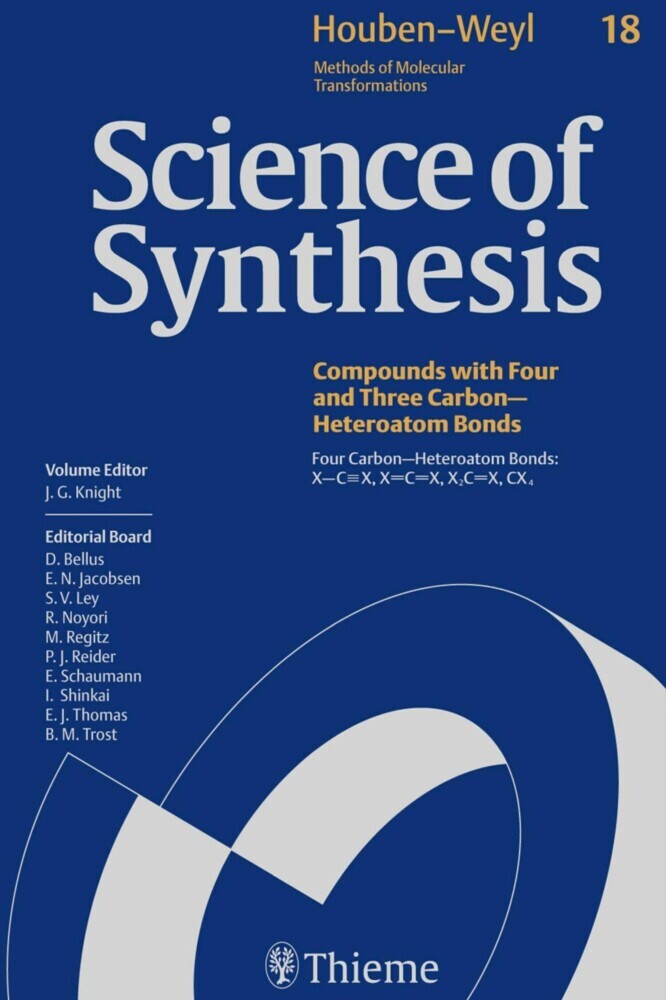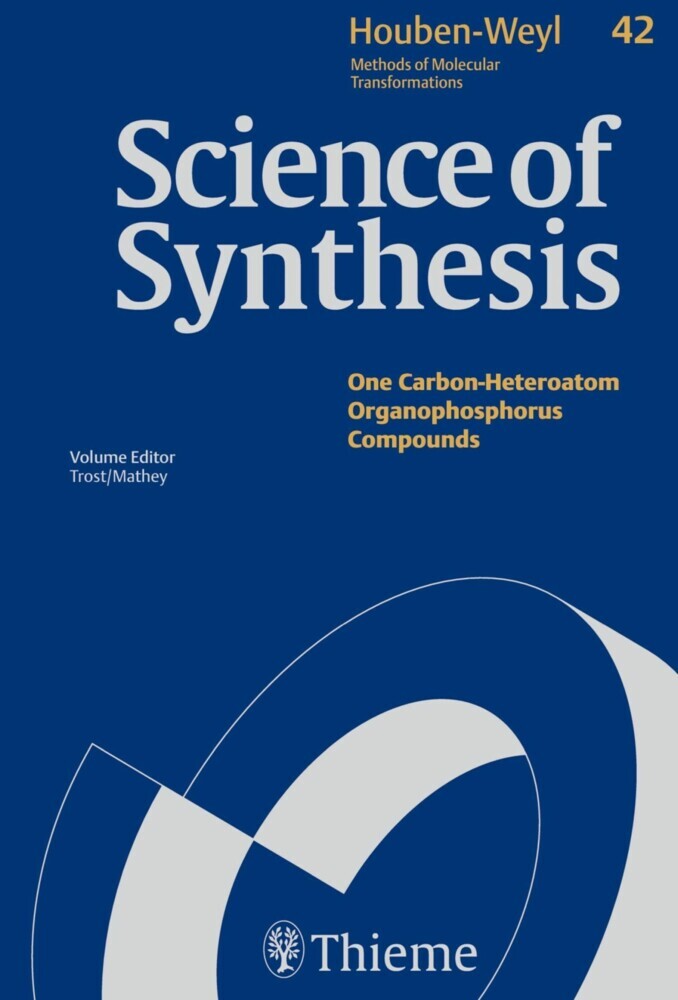Science of Synthesis: Houben-Weyl Methods of Molecular Transformations Vol. 3
Compounds of Groups 12 and 11 (Zn, Cd, Hg, Cu, Ag, Au)
Science of Synthesis: Houben-Weyl Methods of Molecular Transformations Vol. 3
Compounds of Groups 12 and 11 (Zn, Cd, Hg, Cu, Ag, Au)
Turning Information into Knowledge
Science of Synthesis: Houben-Weyl Methods of Molecular Transformations is the entirely new edition of the acclaimed reference series Houben-Weyl, the standard synthetic chemistry resource since 1909. This new edition is published in English and will comprise 48 volumes published between the years 2000 and 2008.
Science of Synthesis is a quality reference work developed by a highly esteemed editorial board to provide a comprehensive and critical selection of reliable organic and organometallic synthetic methods. This unique resource is designed to be the first point of reference when searching for a synthesis strategy.
Features:
- Contains the expertise of presently 450 leading chemists worldwide.
- Critically evaluates the preparative applicability and significance of the synthetic methods.
- Discusses relevant background information and provides detailed experimental procedures
Ian O'Neil
1;Science of Synthesis - Volume 3: Compounds of Groups 12 and 11 (Zn, Cd, Hg, Cu, Ag, Au);11.1;Title page;31.2;Imprint;51.3;Preface;61.4;Overview;91.5;Table of Contents;101.6;Introduction;281.7;3.1 Product Class 1: Organometallic Complexes of Zinc;321.7.1;3.1.1 Product Subclass 1: Zinc--Aryl Complexes;341.7.1.1;Synthesis of Product Subclass 1;341.7.1.1.1;3.1.1.1 Method 1: Diarylzincs by Transmetalation of an Organometallic Reagent with a Zinc Halide;341.7.1.1.1.1;3.1.1.1.1 Variation 1: From an Arylmagnesium Reagent;351.7.1.1.1.2;3.1.1.1.2 Variation 2: From a Preformed Aryllithium Reagent;351.7.1.1.1.3;3.1.1.1.3 Variation 3: From an In Situ Generated Aryllithium Reagent;361.7.1.1.2;3.1.1.2 Method 2: Diarylzincs by Transmetalation of a Triarylborane with a Dialkylzinc;371.7.1.1.3;3.1.1.3 Method 3: Diarylzincs by Transmetalation of a Diarylmercury with Zinc;371.7.1.1.4;3.1.1.4 Method 4: Arylzinc Halides by Transmetalation of an Organometallic Reagent with a Zinc Halide;381.7.1.1.4.1;3.1.1.4.1 Variation 1: From an In Situ Generated Arylnickel Reagent;381.7.1.1.4.2;3.1.1.4.2 Variation 2: From an Arylmagnesium Reagent;391.7.1.1.4.3;3.1.1.4.3 Variation 3: From an Aryllithium Reagent;391.7.1.1.5;3.1.1.5 Method 5: Arylzinc Halides from an Aryl Halide and Zinc;401.7.1.1.5.1;3.1.1.5.1 Variation 1: Using Zinc Dust;401.7.1.1.5.2;3.1.1.5.2 Variation 2: Using Activated Zinc;411.7.1.1.5.3;3.1.1.5.3 Variation 3: Using a Zinc Anode;411.7.1.1.6;3.1.1.6 Methods 6: Additional Methods;421.7.1.2;Applications of Product Subclass 1 in Organic Synthesis;421.7.1.2.1;3.1.1.7 Method 7: Palladium-Catalyzed Aryl--Aryl Coupling;421.7.1.2.2;3.1.1.8 Method 8: Coupling with Acid Chlorides;431.7.2;3.1.2 Product Subclass 2: Zinc--Hetaryl Complexes;441.7.2.1;Synthesis of Product Subclass 2;441.7.2.1.1;3.1.2.1 Method 1: Hetarylzinc Halides by Transmetalation of an Organometallic Reagent with a Zinc Halide;441.7.2.1.2;3.1.2.2 Method 2: Hetarylzinc Halides from a Hetaryl Halide and Zinc;451.7.2.1.2.1;3.1.2.2.1 Variation 1: Using Zinc Dust;451.7.2.1.2.2;3.1.2.2.2 Variation 2: Using Activated Zinc;461.7.2.1.3;3.1.2.3 Methods 3: Additional Methods;471.7.2.2;Applications of Product Subclass 2 in Organic Synthesis;471.7.2.2.1;3.1.2.4 Method 4: Palladium-Catalyzed Cross-Coupling Reactions;471.7.3;3.1.3 Product Subclass 3: Zinc--(Het)arylmethyl Complexes;481.7.3.1;Synthesis of Product Subclass 3;481.7.3.1.1;3.1.3.1 Method 1: Dibenzylzincs by Transmetalation of an Organometallic Reagent with a Zinc Halide;491.7.3.1.2;3.1.3.2 Method 2: Dibenzylzincs by Transmetalation of a Tribenzylborane with a Dialkylzinc;491.7.3.1.3;3.1.3.3 Method 3: (Het)arylmethylzinc Halides from a (Het)arylmethyl Halide and Zinc;501.7.3.1.3.1;3.1.3.3.1 Variation 1: Using Zinc Dust;501.7.3.1.3.2;3.1.3.3.2 Variation 2: Using Activated Zinc;511.7.3.1.3.3;3.1.3.3.3 Variation 3: From an In Situ Generated Benzylic Halide and Zinc Dust;521.7.3.1.4;3.1.3.4 Method 4: (Het)arylmethylzinc Halides by the Methylene Homologation of a (Het)arylcopper;521.7.3.1.5;3.1.3.5 Methods 5: Additional Methods;531.7.3.2;Applications of Product Subclass 3 in Organic Synthesis;541.7.3.2.1;3.1.3.6 Method 6: 1,4-Addition to Michael Acceptors;541.7.4;3.1.4 Product Subclass 4: Zinc--Allenyl Complexes;551.7.4.1;Synthesis of Product Subclass 4;551.7.4.1.1;3.1.4.1 Method 1: Diallenylzincs by Transmetalation of an Organometallic Reagent with a Zinc Halide;551.7.4.1.2;3.1.4.2 Method 2: Propargylic Zinc Halides from a Propargylic Halide and Zinc;561.7.4.1.3;3.1.4.3 Method 3: Allenylzinc Halides by the Methylene Homologation of an Alkynyl Organometallic Reagent;561.7.4.1.4;3.1.4.4 Methods 4: Additional Methods;571.7.4.2;Applications of Product Subclass 4 in Organic Synthesis;581.7.4.2.1;3.1.4.5 Method 5: 1,2-Addition to Aldehydes, Ketones, or Imines;581.7.5;3.1.5 Product Subclass 5: Zinc--Allyl Complexes;581.7.5.1;Synthesis of Product Subcla
| ISBN | 9783131717313 |
|---|---|
| Article number | 9783131717313 |
| Media type | eBook - PDF |
| Copyright year | 2014 |
| Publisher | Georg Thieme Verlag KG |
| Length | 873 pages |
| Language | English |
| Copy protection | Digital watermarking |

